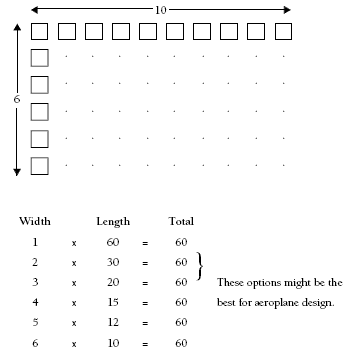This is a level 2 number activity from the Figure It Out series. It relates to Stage 5 of the Number Framework.
A PDF of the student activity is included.
Click on the image to enlarge it. Click again to close. Download PDF (221 KB)
solve multiplication facts using arrays
FIO, Level 2-3, Number, High Flyers, page 14
Calculator (optional)
Students may see the array in question 1 in several ways:
2 + 2 + 2 + 2 + 2 + 2 + 2 + 2 + 2 + 2 or 10 x 2
10 + 10 or 2 x 10
This shows that multiplication and repeated addition are related and that the order of the numbers being multiplied (factors) does not affect the answer (product). This is called the commutative property, and it also applies to addition, for example, 4 + 5 = 5 + 4.
For question 2, teachers may need to point out that the arrays of seats are rectangular. Students may not see this problem as an application of multiplication and division and instead may arrange 60 tiles or multilink cubes. They should be encouraged to record their results. Square grid paper is useful for organising this recording.
A systematic strategy involving multiplication might look like this:
Using a table:
No other numbers between 6 and 10 will work.
To check whether students have generalised the process, you can change the conditions in the problem. For example:
“The aeroplane has 48 seats.”
“The aeroplane makers want a seat pattern that is twice as long as it is wide. They want 32 seats.
How wide is the pattern?”
Answers to Activity
1. 20 seats
2. Answers will vary.
3. Answers will vary.

